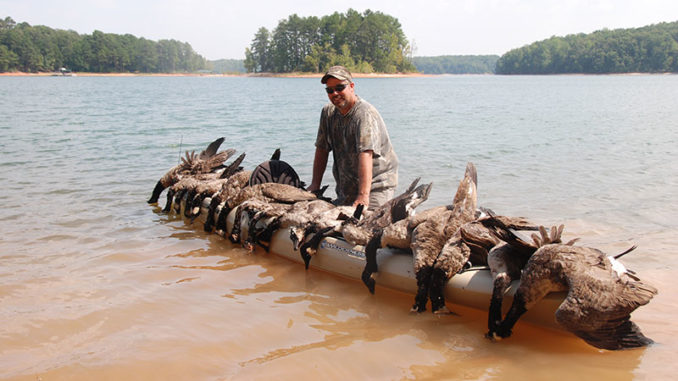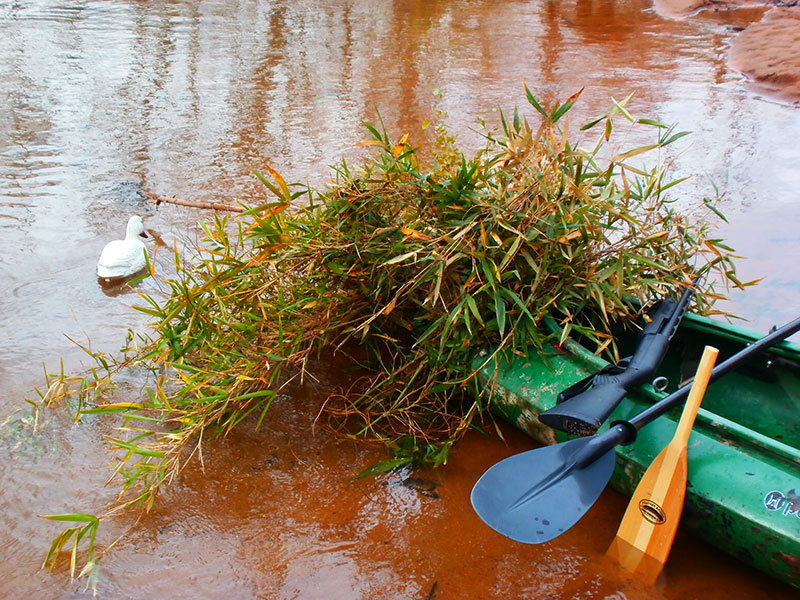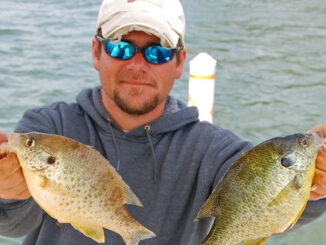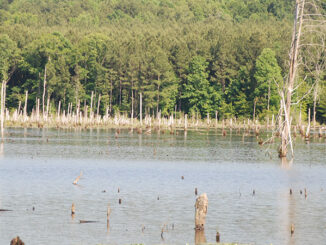
Don’t overlook early goose season!
Kayak anglers who have been out and about through the summer are probably pretty familiar with the habits of resident Canada geese.
Some hunters prefer to go completely terrestrial during the early waterfowl seasons and hunt geese from layout blinds in the middle of open fields. But hunters who opt to use watercraft, particularly highly portable watercraft like kayaks, can also claim their share of birds during the early seasons.
Waterfowl hunting from a kayak is generally broken down into two categories – still hunting and stalk hunting.
Still hunting waterfowl with the use of a kayak is very similar to blind hunting. The boat can be used to transport hunters and gear to the desired hunting spot, then used as a blind or tucked away nearby while the hunters utilize surrounding natural cover to conceal themselves from approaching geese.
If geese are working cover-abundant areas, the kayaking waterfowler can throw out a few decoys, tuck the kayak into some brush, aquatic vegetation or underneath overhanging tree limbs and be pretty well hidden.
The majority of success with blind hunting is patterning the birds ahead of time. Early season geese are notorious for flying both early and late in the day.
Early season geese aren’t very skittish
Veteran early season goose hunters are also successful in knowing where birds like to go to water during the heat of the day. In this scenario, the kayak hunter doesn’t have to be as precise, especially on a public reservoir. That’s because geese are accustomed to being bumped by boating traffic with few ill effects. They generally just move over to a quieter area.

The second category of kayak waterfowl hunting is stalk hunting. Unlike motor powered boats, because kayaks are propelled by human-supplied locomotion, both Carolinas allow hunting from kayaks, even while in motion. Another bonus for kayak hunters when it comes to stalk hunting during the early season is that birds are accustomed to seeing boat traffic on most waterways.
It’s not uncommon to paddle up on a flock of resident geese and rather than spooking them into the air, as would normally occur during winter hunting seasons, the birds will slowly ease away from the boat and into a blind cove. Ideally, surrounding timber prevents them from flying out the far end. When the birds finally realize they are being stalked, the only route of escape is back across the stalker and within range of the gun.
Best Bets
NORTH CAROLINA
WHAT — Redfish and striped bass
WHERE — Neuse and Trent rivers
HOW — Fish steep drop-offs to target both species. Start with topwater early, then switch to deeper diving lures or swimbaits as the sun gets up.
LAUNCH — Find public access at ncwildlife.org/boaters/where-to-boat
INSIDER TIP — During tropical weather fronts, fish around bridge crossings, which hold fish when the weather has them in a less than aggresive mood.
SOUTH CAROLINA
WHAT — Spotted bass
WHERE — Lake Hartwell
HOW — Target secondary rocky points and shoals about halfway into the backs of major creeks. Try topwater or swimbaits near the bank, along with shaky head or Ned rigs. Pumpkinseed colors are good choices.
LAUNCH — Find public boat launches at dnr.sc.gov/boating
INSIDER TIP — The statewide creel limit of spotted bass is 15, except for certain bodies of water, including Lake Hartwell, where the limit is no more than 10 combined total of all black bass species.
Camo that ‘yak
If you ever doubt the imagination and ingenuity of a kayaking sportsman, just take a look at some of the innovations they come up with for storing, hauling, outfitting, and generally making the most of a plastic paddle boat. While anglers get the lion’s share of the notoriety for DIYing stuff for their kayak, hunters are not to be outdone.
In a straight-forward case, a retractable duck blind is easily made from PVC pipe and some camo netting and zip ties. The frame can be strapped to the boat and the flap thrown down when it’s time to shoot.
As for the boat itself, camouflage editions are widely available on the market, but are not mandatory as a basic green, tan, or brown model can be covered with materials to be less visible. It’s also not out of the question to break out the camo spray paint on your hunting boat and create your own pattern. Be aware that spray paint rarely sticks very long to a well-used kayak and you may find yourself repainting the boat every couple of seasons.
In this day and age, many kayak accessory manufacturers are getting on board with commercially making blinds that are either adjustable to fit a wide range of kayaks or made specifically for one model of boat. These same companies make straps, rails, clamps and other accessories that, in the right hands, can be retrofitted to support blinds or blind material.
Don’t overlook natural cover when it comes to hiding a kayak from birds’ eyes. A big benefit to early season water fowling in the kayak is that leaves are still on the trees and other woody cover, so a few well chosen limbs or branches of foliage can provide a lot of cover to a kayak hiding at water’s edge.





Be the first to comment